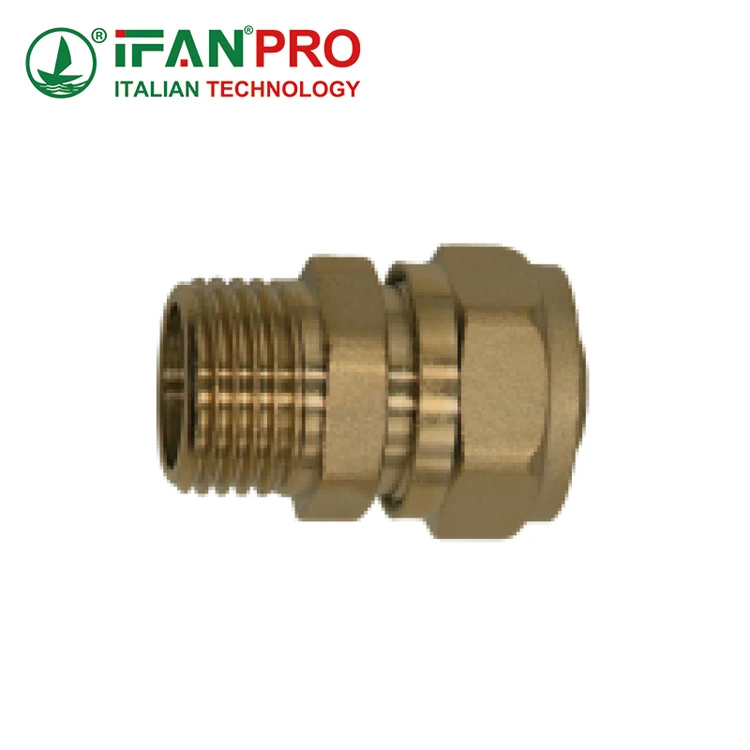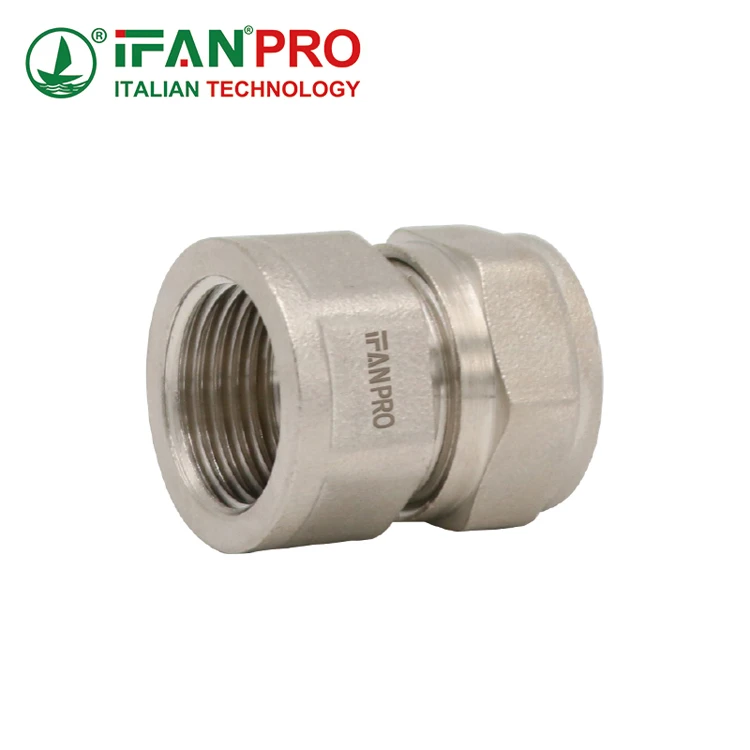After replacing failed fittings in a commercial building that cost the owner $15,000 in water damage, I developed a systematic approach to PEX fitting selection. This method has since helped hundreds of clients avoid similar failures by matching fitting specifications to their specific system requirements.
Choosing correct PEX fittings requires evaluating four key factors: connection type compatibility with your PEX material, material suitability for your water chemistry, pressure ratings matching your system requirements, and proper certifications for your application. Always verify fitting specifications against your project’s specific needs rather than relying on generic recommendations.

Selecting the right fittings involves understanding both technical specifications and practical installation considerations. Let’s examine the critical factors that ensure optimal fitting performance in your specific application.
What Are the Main Types of PEX Fittings and Their Key Differences?
When a client insisted on using expansion fittings with their PEX-B pipes against my recommendation, the resulting leaks cost them thousands in repairs. This experience reinforced the importance of matching fitting types to both the PEX material and installation requirements.
The four main PEX fitting types are crimp, clamp, expansion, and push-to-connect, each offering different advantages for specific applications. Crimp and clamp fittings provide reliable, cost-effective connections, while expansion fittings offer superior flow characteristics and push-to-connect deliver maximum installation speed with minimal tools.
Comprehensive Fitting Comparison
Understanding each type’s characteristics ensures proper selection:
Crimp Fittings
Stainless steel rings compressed with a specialized tool create permanent connections. This system works with all PEX types and offers excellent reliability when properly installed. The compact design fits in tight spaces, but requires tool calibration and verification.
Clamp Fittings
Similar to crimp systems but using stainless steel clamps with tightening screws. The visible inspection feature allows verification without special tools. Clamp systems provide consistent performance and are slightly more forgiving during installation than crimp connections.
Expansion Fittings
These require expanding the PEX pipe before inserting the fitting, relying on the material’s memory to create a strong mechanical bond. This system works exclusively with PEX-A and provides superior flow characteristics due to full internal diameter maintenance.
Push-to-Connect Fittings
The simplest installation method requiring only pipe preparation and pushing into the fitting. Internal stainless steel grippers and O-rings create instant seals. While most expensive per fitting, they save significant labor time and require no special tools.
Selection Guidelines
Different applications benefit from specific fitting types:
| Application | Recommended Fitting | Key Advantage | Considerations |
|---|---|---|---|
| DIY Projects | Push-to-Connect | No special tools needed | Higher fitting cost |
| Professional Installation | Expansion | Best flow characteristics | PEX-A only, tool investment |
| Cost-Sensitive Projects | Crimp | Lowest material cost | Tool required |
| Visible Installations | Clamp | Visual inspection possible | Bulkier profile |
| Retrofit Work | Push-to-Connect | Installation speed | Space for push mechanism |
How Do You Match Fitting Materials to Your Specific Water Conditions?
I consulted on a coastal community project where aggressive water conditions destroyed standard brass fittings within three years. By analyzing water chemistry and switching to specialized alloys, we extended fitting lifespan beyond 15 years with no further failures.
Matching fitting materials to water conditions requires analyzing water pH, chlorine levels, mineral content, and temperature. Brass alloys work well in neutral pH waters, while bronze offers better corrosion resistance in aggressive conditions, and plastic fittings provide immunity to water chemistry issues in moderate pressure applications.

Water Chemistry Analysis
Different water conditions demand specific material choices:
pH Considerations
- Neutral Water (pH 6.5-8.5): Standard brass fittings perform well
- Acidic Water (pH below 6.5): Bronze or DZR brass recommended
- Alkaline Water (pH above 8.5): Plastic or copper-nickel fittings preferred
Chlorine and Chloramine Levels
Municipal water treatment chemicals aggressively attack metal fittings:
- Low Chlorine (<1 ppm): Standard brass acceptable
- Moderate Chlorine (1-4 ppm): Bronze or specialty alloys recommended
- High Chlorine (>4 ppm): Plastic fittings or certified corrosion-resistant alloys
Mineral Content Effects
- Soft Water: Accelerates metal leaching – consider plastic alternatives
- Hard Water: Mineral buildup protects metals but reduces flow
Material Performance Characteristics
Each material offers different advantages:
Brass Alloys
- C36000 (Traditional Brass): Excellent machinability but contains lead
- C69300 (Bismuth Brass): Lead-free alternative with good corrosion resistance
- C87850 (Silicon Brass): Superior corrosion resistance, more difficult to machine
Bronze Fittings
More expensive but offer excellent corrosion resistance, particularly in aggressive waters. The copper-tin composition provides natural protection against dezincification and chemical attack.
Plastic Fittings
Polymer fittings eliminate corrosion concerns but have lower temperature and pressure ratings. Ideal for moderate conditions where water chemistry would damage metal alternatives.
What Pressure Ratings and Certifications Should Proper PEX Fittings Have?
When a school project failed inspection due to uncertified fittings, I helped the contractor navigate the certification requirements, turning a potential disaster into a learning opportunity about the importance of proper documentation and third-party verification.
Proper PEX fittings should carry NSF/ANSI 61 certification for potable water safety, minimum pressure ratings of 160 PSI at 73°F, and specific standards like ASTM F1807 for metal insert fittings. These certifications ensure fittings meet minimum safety, performance, and material composition requirements for reliable plumbing applications.
Essential Certification Requirements
Key certifications verify different aspects of fitting performance:
NSF/ANSI 61
This crucial certification verifies that fittings don’t leach harmful contaminants into drinking water. The testing examines lead, cadmium, and other heavy metal content, ensuring materials meet strict safety standards for potable water systems.
ASTM Standards
- ASTM F1807: Covers metal insert fittings for PEX systems
- ASTM F2159: Addresses plastic insert fittings
- ASTM F877: PEX tubing standard that fittings must complement
Pressure Rating Verification
Fittings should clearly display pressure ratings for different temperatures:
- 160 PSI at 73°F for cold water applications
- 100 PSI at 180°F for hot water systems
- 4:1 safety factor between working and burst pressure
Certification Verification Process
Ensure fittings meet requirements through systematic verification:
Documentation Review
- Request current certification documents from manufacturers
- Verify the specific product line is covered
- Check for expiration dates or limitations
Marking Inspection
Properly certified fittings display:
- NSF marking for potable water approval
- Pressure and temperature ratings
- Manufacturer identification
- Material composition information
Third-Party Validation
Use online databases from NSF, IAPMO, or UL to verify certification status independently from manufacturer claims.
How Can You Ensure Leak-Proof Connections During Fitting Installation?
After tracking leak statistics across 500+ installations, I identified that 80% of failures resulted from just three installation errors. By developing targeted training around these specific issues, we reduced leak rates by 90% in subsequent projects.
Ensuring leak-proof connections requires proper pipe preparation, correct tool operation, and systematic verification. Square cuts, thorough deburring, and clean surfaces combined with calibrated tools and post-installation testing create reliable seals that withstand long-term pressure and temperature variations.
Critical Installation Steps
Follow this methodology for consistent results:
Pipe Preparation Protocol
- Square Cutting: Use sharp, PEX-specific cutters for clean edges
- Complete Deburring: Remove all internal and external sharp edges
- Surface Cleaning: Wipe pipes with clean cloth before connection
- Depth Marking: Mark insertion depth on pipe for visual verification
Tool Operation Standards
- Regular Calibration: Verify tool performance monthly
- Proper Positioning: Ensure correct alignment before operation
- Complete Cycles: Allow tools to complete full operation cycles
- Battery Management: Maintain adequate charge in cordless tools
Verification and Testing
Multiple verification layers ensure connection integrity:
Visual Inspection
- Crimp Connections: Verify uniform compression around circumference
- Clamp Systems: Confirm proper gap alignment and screw positioning
- Expansion Fittings: Check for complete ring seating and pipe contact
- Push-to-Connect: Validate depth marks and audible click confirmation
Pressure Testing Protocol
- Test at 1.5 times system working pressure for 30 minutes
- Document starting and ending pressure readings
- Investigate any pressure drop exceeding 5%
- Repair and retest any failed connections
Common Installation Errors and Prevention
| Error | Consequence | Prevention Method |
|---|---|---|
| Angular cuts | Uneven compression | Use guide for square cuts |
| Incomplete insertion | Reduced grip engagement | Mark and verify depth |
| Dirty pipes | Compromised seals | Clean before assembly |
| Wrong size rings | Poor compression | Verify ring-to-tool matching |
| Uncalibrated tools | Under/over compression | Monthly calibration check |
Quality Assurance System
Implement these practices for consistent results:
Pre-Installation Verification
- Confirm fitting and pipe compatibility
- Verify tool calibration status
- Check fitting certifications match requirements
- Test sample connections when using new materials
During Installation Monitoring
- Regular visual inspection of connections
- Periodic pressure testing during large installations
- Documentation of installation conditions
- Immediate correction of identified issues
Post-Installation Validation
- Comprehensive pressure testing of complete system
- Visual audit of accessible connections
- Documentation for future reference
- Client education on system operation and limitations
Conclusion
Choosing correct PEX fittings involves matching connection type to PEX material, selecting materials for your water chemistry, verifying certifications/pressure ratings, and following meticulous installation practices. For step-by-step installation guidance, visit: PEX Fitting Installation Best Practices.













Recent Comments